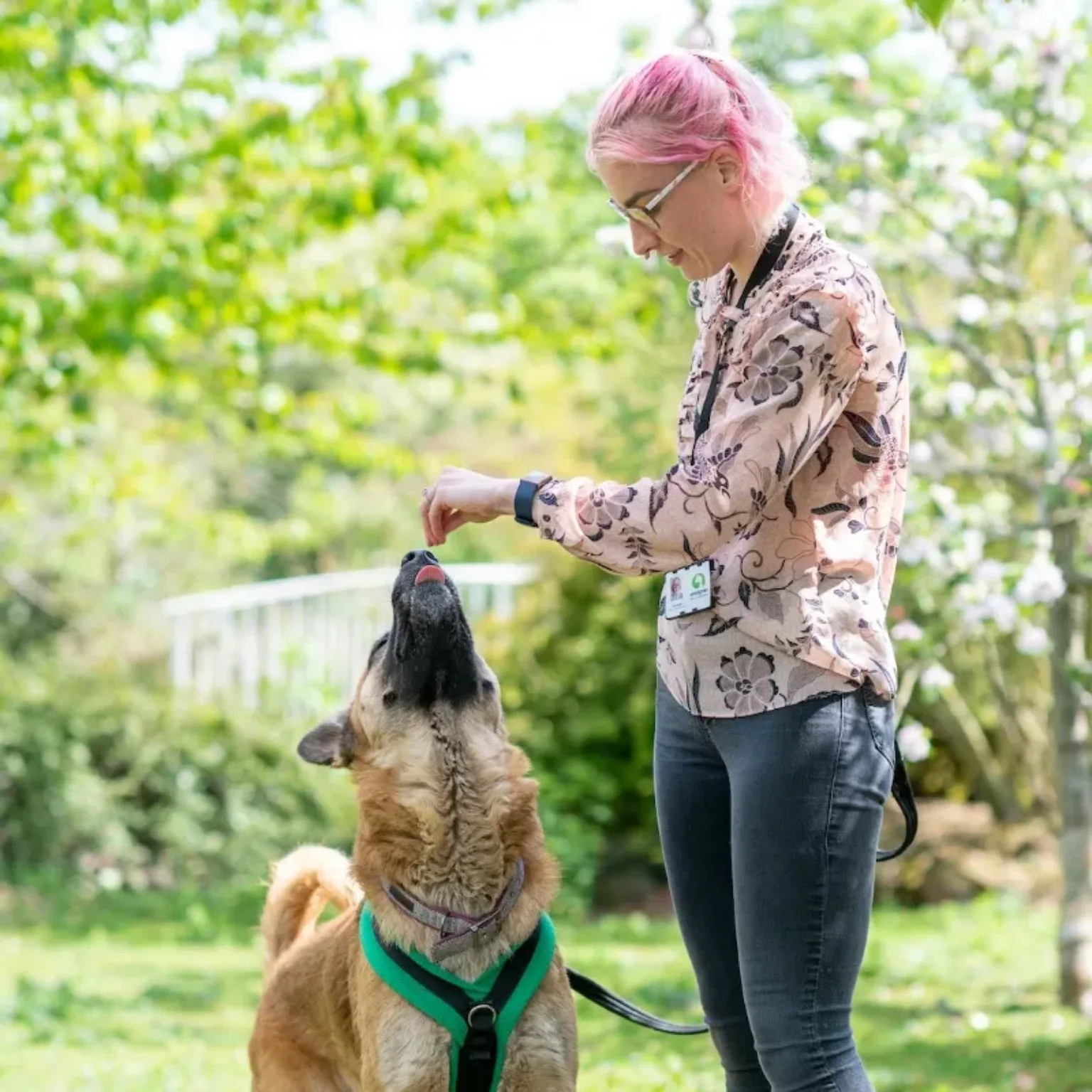When it comes to pets, we've all got questions
Ever feel like your pet is from another planet?

When it comes to house and toilet training your dog, most learn to hold it in when they’re indoors, and relieve themselves outside. Others however, may not have picked this up and need extra support. And there are many reasons for this!
Most dogs have access to a garden or area outside for them to go to the toilet. This is essential when toilet training, but some may not have had a place to do their business. Others might pee inside because they’re too frightened to ‘go’ outside. Then there are those who may be perfectly happy to toilet outside, but also don’t realise they’re not supposed to wee or poo when inside.
Occasionally, when a puppy doesn’t get the right house training; they may be punished for toileting indoors and they associate the punishment with toileting near people. When they’re frightened about being told off, they learn to go to a different room, or behind furniture where they can’t be seen.
Dogs who’ve been raised in a non-homely environment, such as an outbuilding, are more likely to have learned to toilet indoors. For dogs with minimal access to a garden or outdoor space like this, they associate going to the toilet in an enclosed space with a roof. They’ll often hold themselves outside even if they really need to ‘go’. Once these habits have been established, it can take a while to change them. Luckily, once rehomed and receiving better behavioural and house training support, they will learn to appropriately toilet outside.
Some dogs won’t toilet when their owners are around, but will go as soon as they’re shut away at night, or when their owners are out. This may indicate stress and anxiety when they’re alone. Have a read of our article on ‘how to leave your dog on their own’ to help your dog cope with this.
Some dogs may have a medical condition that causes them to toilet more, have less control, or, they may even be incontinent. It’s worth paying a visit to your vet before you begin house training as they’ll be able to rule out any medical causes. Good news is, there are many conditions that are easily managed with medication. It’s also important to talk to your vet if your dog is already on medication as some can affect toileting too.
Once your four-legged friend is given the ok and you’re ready to start house training, get the family together for a chat and make sure everyone’s on the right page. Consistency is key when it comes to learning new things.
For dogs that sometimes toilet outside, it’s best to stay close by so you can reward them with tasty treats or praise when they do toilet outside. Food and verbal praise is the best type of reward for this training over toys. Give the action a word like “tiddles” or any word you want to associate with them going to the toilet. Eventually you’ll be able to say the associated word to let your dog know you want them to go to the toilet.
When inside, stay in the same room with your dog, if you need to pop out – ask someone to take over and let them outside in intervals.
It’s perfectly normal for accidents to happen indoors to begin with. House training isn’t a ‘one-size-fits-all approach’ some dogs will pick it up easier and quicker than others. When ‘an accident’ happens don’t react, just pop your dog outside anyway; occasionally you may find they’ll immediately go again outside – that way you can clear up without them being stressed. Keeping your dog calm and happy is important, especially if they may have been punished in that situation before.
It can be really tricky if your dog never does their business outside and does take longer to resolve but you will get there in the end! Even if you need one-to-one support, you can start work towards helping your dog be consistent about where he, or she, goes.
Temporary litter training is something you can try. It’s not common in the UK, but around the world, it’s not unusual to litter train dogs in a similar way to cats.
Puppy pads are not recommended for house training, this is because they feel similar to rugs and carpets under dogs’ paws. Once they get into the habit of choosing to pee on the puppy pad, they may also choose a carpet or rug, especially when visiting an unfamiliar house. Newspaper is awkward to clean up, but it’s great for quickly house training.
Follow the steps for going outside – name the action and reward all toileting in the tray. Once your dog learns to just use the tray, move it inch by inch towards the door, until it’s outside. And eventually, start saying the key word for your dog to toilet when they’re near but not in the tray. This will help them feel more confident to toilet outside.
If you’re still struggling to house train your adult dog after following our advice, don’t hesitate to get in touch with us and book an appointment with one of our behaviour and training specialists. For more dog behaviour and training tips, visit Ask Woodgreen today.